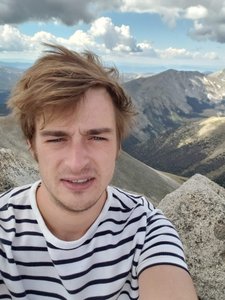Theoretical High Energy Physics

Dr Jack Setford has been a Post-Doctoral Fellow at the University of Toronto since September 2018, working in Theoretical High Energy Physics in Professor David Curtin’s research group. In September 2020, Jack was awarded a competitive Faculty of Arts & Science Postdoctoral Fellowship. Jack is interested in the overlap between particle physics and astrophysics; his research uses stars, white dwarfs, neutron stars and black holes as laboratories for testing fundamental physics.
Jack is particularly interested in dark matter and dark complexity: “Dark Complexity is the notion that dark matter might be more than just one kind of particle — the universe of dark matter could be just as rich and complex as the world of ordinary matter that we see around us. I’m particularly interested in finding new, unconventional ways of searching for dark matter.”
Jack has spent much of the last couple of years trying to understand how to detect “Mirror Stars” — stars made entirely of dark matter that would shine in dark light. These would be almost completely invisible to us, but could be seen by state-of-the-art space telescopes, potentially appearing as extremely dim spots of light in the sky, accompanied by a distinctive X-ray signal.
Jack obtained his undergraduate MPhys degree from the University of Oxford, and his PhD from the University of Sussex in the UK. He spent some time during his PhD as a visitor at UC Berkeley in the US, and at DESY in Hamburg, Germany. He says, “It’s been weird adjusting to working from home; I really miss traveling to different places to give seminars and attend conferences. Zoom presentations just aren’t the same!”
Besides his work he enjoys creative writing — although writing a novel while trying to do a postdoc in physics is proving challenging. He also enjoys taking part in outreach activities: while at the University of Sussex he developed a particle physics game as a teaching tool for kids, in which complex particle interactions can be built from simple jigsaw-like puzzle pieces.

